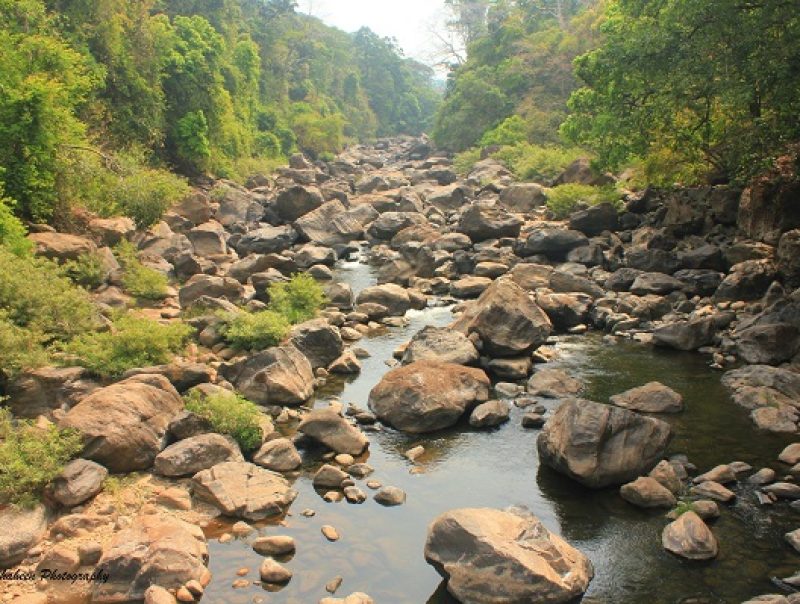From the growing list of wildlife extinction to rapid habitat degradation causing virus spillover, the alarm bells are ringing loud and clear warning to save the planet. WWF India has been at the forefront of the conservation of the country’s wildlife and natural habitats. Asrashaheen.in talks to Farida Tampal, State Director, WWF, Hyderabad, India to understand how the organisation has been making a concerted effort to check the degradation of the planet’s natural environment.
Once upon a time, there lived the graceful pink-headed ducks (Rhodonessa caryophyllacea), which dived into small ponds that were surrounded by bushes and high grass around the lower areas of the Ganges and the Brahmaputra River. They merrily swam in the marshes and swamps to feed on their favourite waterweed and invertebrates. This elusive bird, in all its probability, preferred solitude and hence chose secluded lowland water pools for breeding. With a bright pink tuft on the head and glistening dark brown body, the glory of this bird could make even the most hard-headed of souls pay an ode to its pristine beauty. But as time went by, the small ponds, marshes, and swamps paved the way for large-scale human settlement and agriculture. With its habitat lost to unchecked human activities, the pink-headed duck disappeared. While some reports suggest they may exist in the remote swamps of northern Myanmar, it is largely feared extinct since the 1950s.
What’s equally or more worrisome is that the pink-headed duck is just one of the many species on the growing list of extinction, the world over. Deforestation, unplanned urbanization, and lack of political will and farsighted policymaking are some of the innumerable factors that have resulted in a general disregard for nature at large. The wildlife has become such an aloof experience from our lives that only unprecedented global lockdowns during the initial days of the COVID-19 pandemic could bring about some of the most heartening visuals of “Nature reclaiming public spaces”. Remember a kangaroo hopping across empty streets in Australia or closer home, a sambar deer seen taking a zebra crossing in Chandigarh?

Several researchers point out that climate change and the exploitation of wildlife by humans is causing habitat degradation and perilous contact between the two, thus increasing the risks of virus spillover. The current COVID crisis is a case in point.
Basically, the alarm bells are ringing loud and clear appeal for conservation: It’s now or never!
Asrashaheen.in takes an insightful look at the possibilities of building a future where humans live in harmony with nature. World Wide Fund for Nature-India (WWF India) has been at the forefront of the conservation of the country’s wildlife and natural habitats. Addressing issues such as the conservation of species and its habitats, climate change, water and environmental education, among others, the organisation has been working with governments, NGOs, schools and colleges, corporates, students and other stakeholders. This year is a milestone for the organisation as it marks 50 years of WWF in India.

We talk to Farida Tampal, State Director, WWF, Hyderabad, India to deep dive into understanding how the organisation has been making a concerted effort to stop the degradation of the planet’s natural environment. Working with WWF for 22 years now, Farida has had a long-standing association with the organisation even as a Nature Club member ever since 1984. With her expansive experience, she gives us a rich perspective of WWF’s efforts to address the common goal of conserving biodiversity, sustainably using natural resources and maintaining ecosystems for the survival of wildlife and people depending on them.
Interview with Farida Tampal, State Director, WWF, Hyderabad, India

One of the recent wildlife incidents which took the social media by storm was the death of the pregnant elephant in Kerala owing to a suspected explosion from a fruit stuffed with firecrackers. In the light of such incidents, how is WWF working towards balancing the human-wildlife interface?
WWF India condemned the gruesome death of the pregnant elephant near Palakkad, Kerala on 27 May 2020. We requested the Kerala Forest Department and local authorities to thoroughly investigate this matter and ensure that those responsible for this gruesome act are held accountable under the provisions of the Wildlife (Protection) Act, 1972 and any applicable law so that such practices are not repeated in the future.
This incident surely touched the emotional chords as citizens across India reacted with alacrity to sign and circulate petitions. Social media was inundated with the news. Once again, conservation of species and spaces became a citizen’s agenda.
Fragmented habitats and corridors used by this mammoth animal, depleting forests reserves for sustaining themselves, invasive alien plant species (non-native plant species that spread and out-compete native plant species) and humans making inroads into elephant territory are some of the reasons that have increased negative human-elephant interaction.
Elephants require large areas for foraging and are migratory in nature. They move constantly in search of food and this leads to conflicting situations as they depredate on crops, a relatively easy and faster way to find food.
WWF India has been working to mitigate human-elephant conflict and has been working towards restoring and securing connectivity in elephant habitat landscapes with the participation of the forest departments, local NGOs and communities.
WWF has taken up mitigation measures like community-managed power fencing, driving back crop-raiding elephants into forests using kunkis (trained captive elephants), formation and capacity-building of community-based anti-depredation squads (ADS), use of bio-repellents like chilli and setting up of early warning systems have been taken up to meet the challenge. Logistic and other critical support is provided to the forest department for managing conflict situations. Community-based solar fencing of land lying fallow to crop raiding has helped re-start agricultural activities in some landscape. Scientific monitoring of elephant movement has been taken up in Western Ghats to understand the migratory path.
Global warming is the crux of all matters related to environment today. But the ticking time bomb doesn’t seem to be raising the alarm bells in the collective consciousness at large – corporate/businesses, civil society and governance. Give us some examples of how WWF is bringing about a change in this direction.
Yes, global warming leading to climate change is definitely one of the most serious threats that humankind is facing today. But I would not say that governments, Corporate/ Business, or the civil society has been silent spectators. The Government of India (GOI), ahead of the December 2015 UN Conference of Parties (COP) in Paris, submitted its INDC (Intended Nationally Determined Contributions. India has pledged to improve the emissions intensity of its GDP by 33 to 35 per cent by 2030 below 2005 levels. GOI also pledged to increase the share of non-fossil fuels-based electricity to 40 per cent by 2030. It has agreed to enhance its forest cover which will absorb 2.5 to 3 billion tonnes of carbon dioxide (CO2, the main gas responsible for global warming) by 2030. A National Solar Mission was put in place to reduce dependence on the conventional energy sources.
Most large corporates have also taken on a fair share of its role to reduce the impact of climate change. The matter of concern are the small and medium scale companies that will need to be supported with technology that is non-polluting and at the same time makes economic sense. As far as the role of the civil society is concerned, they have been at the forefront of advocating for better environmental norms to be put in place.
WWF India has been working closely with governments, civil society organisations and communities on mitigation and adaption. Our efforts are towards supporting the development and mainstreaming of low carbon growth strategies at the national and state government level.
We have also demonstrated the use of renewable energy in key landscapes to reduce pressures on local natural reduces and enhance energy access. WWF India also works towards influencing policies on renewable energy. In Hyderabad, WWF India installed the country’s first solar-based deep well pumping system in Nagarjunasagar Srisailam Tiger Reserve in the erstwhile united Andhra Pradesh.

I would say that today there is a greater understanding on the impact of climate change even among common people. To get people sensitized towards climate change, one will need greater engagement from the civil society. Every citizen will need to re-evaluate her/his own lifestyle and make better and cleaner choices. The vulnerable communities and the economically challenged will need to be empowered with the right information and equipped to face the vagaries of our changing climate.
Indigenous communities have been the true guardians of wildlife. How is WWF working with these communities towards wildlife protection?
WWF India has been working with Chenchus, an indigenous hunter gatherer community inhabiting the Nallamala Forests, for more than four decades. The Chenchu men are employed by the Forest Departments of Andhra Pradesh and Telangana State as Base Camp Staff or Protection Watcher, Fire Watchers, Swaccha Sevaks and have also won awards for their efforts.
We have also trained young boys and girls of this community as Nature Guides. Their ethno-botanical knowledge and wisdom of the terrain is unsurpassed.
To acknowledge their contribution to the conservation of the Nallamala forests, we started the Annual Ekalavya Archery Championship to keep the Base Camp staff and Watchers motivated and also to recognise their innate skill at archery, using their handmade bows and arrows. During the first Championship, an elderly member of the Chenchu Mahasabha (Chenchu Association) thanked WWF India for the recognition which they never received despite inhabiting the landscape since times immemorial. He emphasised that “they would commit to continuing to protect the forests and the tiger as their elder brother”.

In other landscapes in India where we work, we have ensured that our approach and models demonstrate the critical linkage between sustainable livelihoods and conservation management by local communities.
WWF-India is working with communities living around Protected Areas (PAs) where access to and use of forest resources is restricted. To address this, the programme promotes the minimum dependence of communities living around PAs on the natural resources and helping communities in adopting viable alternative sources of income. The livelihoods promoted include medicinal plant cultivation, improved animal husbandry, poultry rearing, carpet-weaving, mushroom-farming, basket-making, organic farming, agro-forestry, fish-farming, and floriculture and fodder production.
How can a common person get involved with WWF towards making a difference?
WWF India has always attracted many volunteers from all walks of life. Many have gone on to make careers in the environment and wildlife sector too. Many others have ensured that their workspaces and colleagues are also environmentally sensitive. WWF India also has a dedicated programme for volunteers. Presently, we have a call for volunteers for the Dragonfly and Damselfly Festival as well for Mangrove Awareness Programmes. We have had programmes like Tide Turner project and ECHO (Environment Conservation Heroes) where large number of youngsters took part as volunteers. We have many volunteers who have brought out publications on plants and animals after learning the skills while volunteering with us.
Do you want to be the change you want to see? Here’s your chance to volunteer with WWF. For more details, visit www.wwfindia.org


